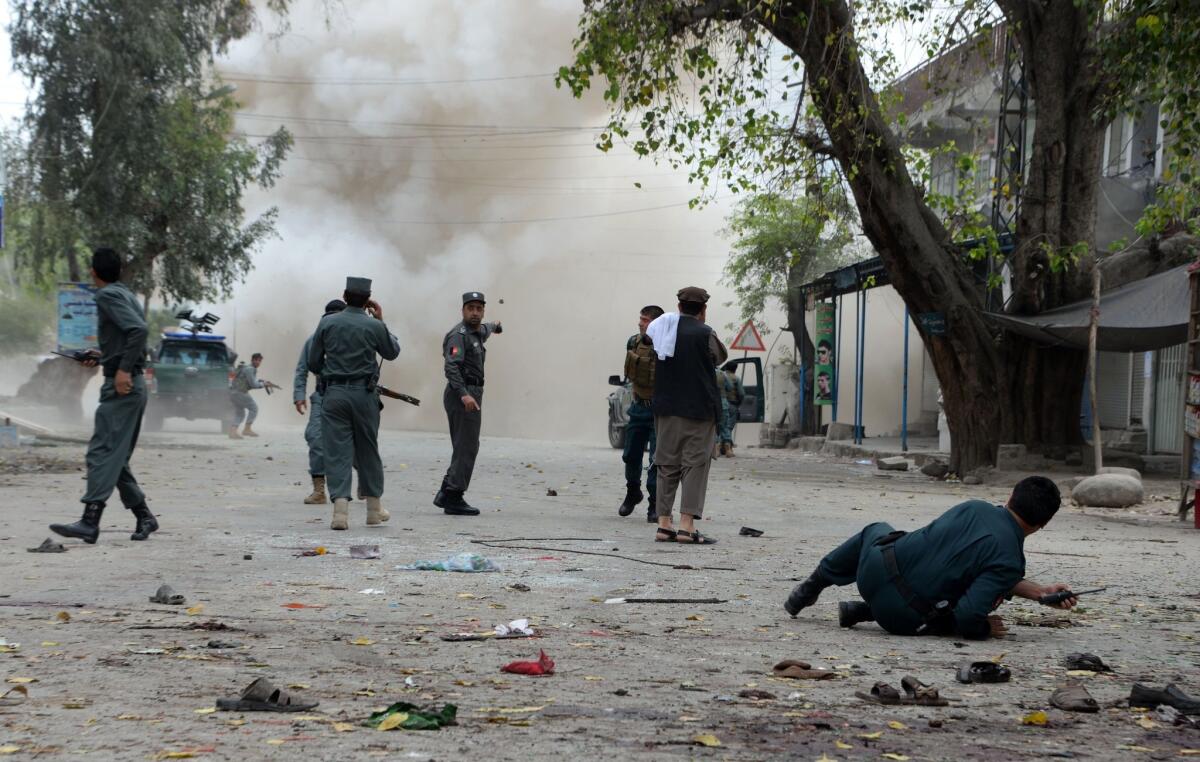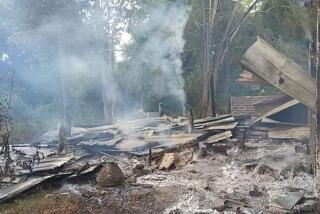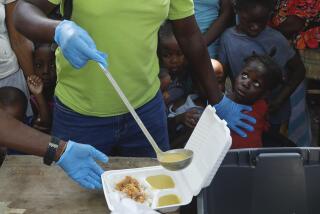2015 was the worst year on record for civilian casualties in Afghanistan

Afghan security personnel look on after a second explosion following a suicide attack outside a bank in Jalalabad on April 18, 2015.
- Share via
Reporting from Jalalabad, Afghanistan — When Yousef, 32, arrived at a central roundabout in Jalalabad one morning last spring, he was shocked by what he saw: A suicide bombing outside the local Kabul Bank branch had turned one of the city’s busiest areas into a site of unparalleled carnage.
“I myself transported at least 16 dead bodies within the first hour,” he said.
At least 33 people were killed and at least 100 others injured in the April bombing in northeastern Afghanistan, one of many that contributed to the worst year on record for civilian casualties in the country.
The United Nations Assistance Mission in Afghanistan reported Sunday that 2015 was the deadliest year for noncombatants since the agency first began tracking civilian casualties in 2009.
The report documented 3,545 civilian deaths, a 4% increase from 2014, and 7,457 injuries, a 9% rise.
Once again, the fighting took the heaviest toll on what the U.N. agency called “the most vulnerable,” namely women and children, as casualty rates among both groups increased by double digits. The report documented 333 deaths and 913 injuries among women, a 37% overall increase on the year prior. Child casualties rose by 14% to 733 deaths and 2,096 injuries.
As in the past, ground engagements between Afghan National Security Forces and the armed opposition were the leading cause of civilian casualties. Targeted killings and suicide bombings were the other leading causes. Anti-government elements were blamed for the majority of the casualties.
The April bombing in Jalalabad, which was claimed by a new group that says it has ties to Islamic State, represents the changing tactics of the armed opposition.
The past year has seen the opposition, led by the Taliban, stage more audacious attacks with increased targeting of the country’s major cities, many of which were once considered to be relatively safe.
The Taliban issued a statement Sunday denouncing the U.N. report, calling it “propaganda ... compiled at the behest of the occupying forces.” It said the blame for civilian casualties “falls squarely on the shoulders of the Americans ... and the stooge Kabul administration.”
Yousef, who only has one name, had moved to Jalalabad from smaller Sorkh Rod because of increasing violence there. But the violence followed him, erupting in one of the busiest places in the city.
He said he was on his way to run some errands that morning when he received a phone call alerting him to the bombing.
“As soon as I heard ‘there’s been a bombing outside Kabul Bank’ I rushed over,” he said. “Everything is near that roundabout—taxis to Kabul, the bank, shops. It’s one of those places where there is always crowds of people walking around.”
The U.N. mission documented a 16% increase in civilian casualties attributed to “anti-government elements” from suicide bombings and so-called “complex” attacks, which involve multiple attackers and weapons.
Latifi is a special correspondent
More to Read
Sign up for Essential California
The most important California stories and recommendations in your inbox every morning.
You may occasionally receive promotional content from the Los Angeles Times.










